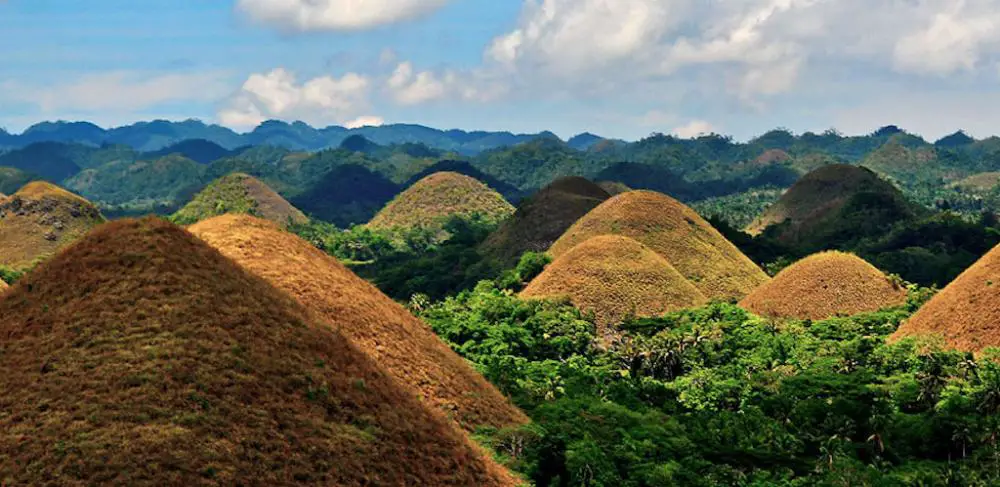We live on a dying planet: Massive pollution in all its forms; melting polar ice-caps; desertification of the land; dwindling water resources; disappearing flora and fauna; toxic waste filling the oceans and rivers and all around this Dantean landscape, the ceaseless and viral multiplication of the culprit behind it all, Man. Yet for all the willful withering, decay and destruction, “The poetry of the earth is never dead,” as Keats once said. The endless array of natural phenomena that bless the earth is truly marvelous and a singular treat for the eye and the imagination, if you you’re lucky enough to catch a glimpse of it. Wondrous sunsets are child’s play, feast your eyes on these 20 natural phenomena you must see before dying.
Glowing Beaches
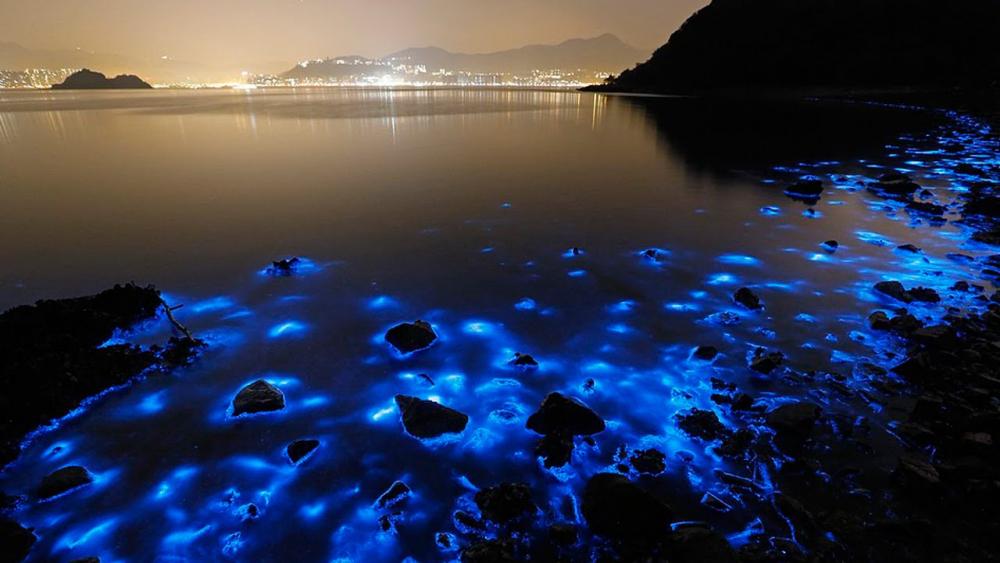
Visiting the glowing beaches of the Maldives Islands, specifically on Mudhdhoo and Vaadhoo Islands, is a chance to be captivated by three of nature’s rarest beauties: The mesmerizing glowing beaches themselves with their tranquil blue lighting up the night waters of the Indian Ocean, and then wonder how the tiny ostracod crustaceans can emit such lovely light. The third natural phenomena would be the incomparable Maldives Islands, a veritable paradise on earth that, unfortunately, is the third most endangered nation on the planet thanks to climate change, so catch it while you can.
Salt Flats
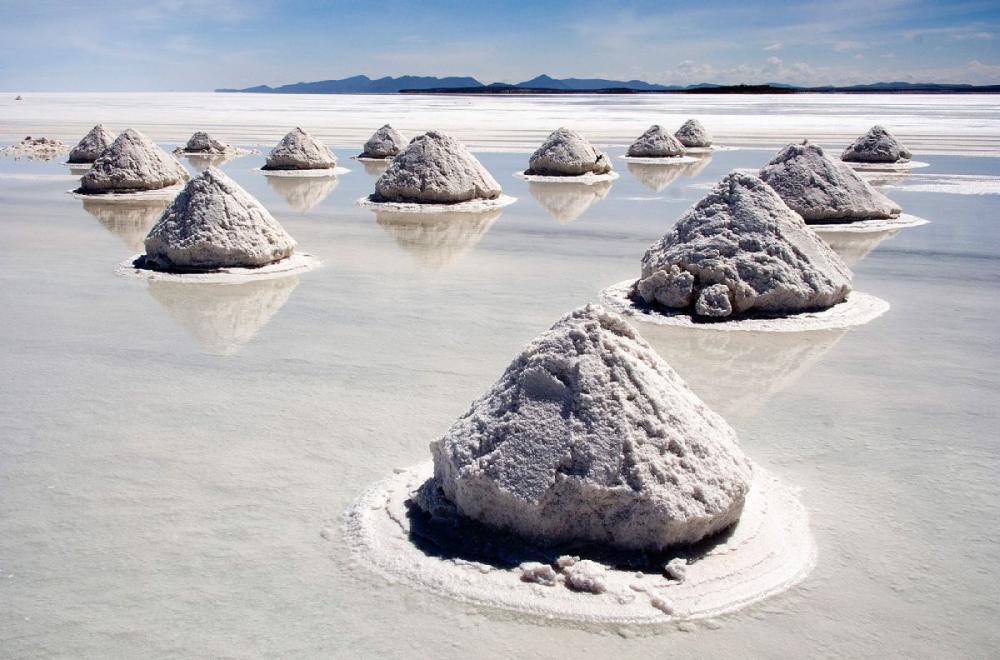
Thriving lakes leave behind the footprint of their existence, once they’ve dried up and died. But death for these waterways means new life in the form of salt flats, rich in minerals like sodium, potassium, lithium and magnesium. These areas of land generally form in deserts and other arid places, where large bodies of water have dried up over thousands of years and the salt and other minerals are the remnants. There are salt flats found around the world but some of the largest examples include the Salar de Uyuni in Bolivia, the Bonneville Salt Flats in the state of Utah and those found in California’s Death Valley National Park. Salar de Uyuni is the biggest salt flat in the world covering 4,086 square miles (10,852 sq km) and standing at an elevation of 11,995 feet (3,656 m). Its importance as a reservoir of minerals is overshadowed by its role as a breeding ground for several species of flamingoes and other wildlife. Nothing could be more surreal than viewing the white expanse of Uyuni, dotted with pink birds, high in the Andean altiplano, set against the southern blue.
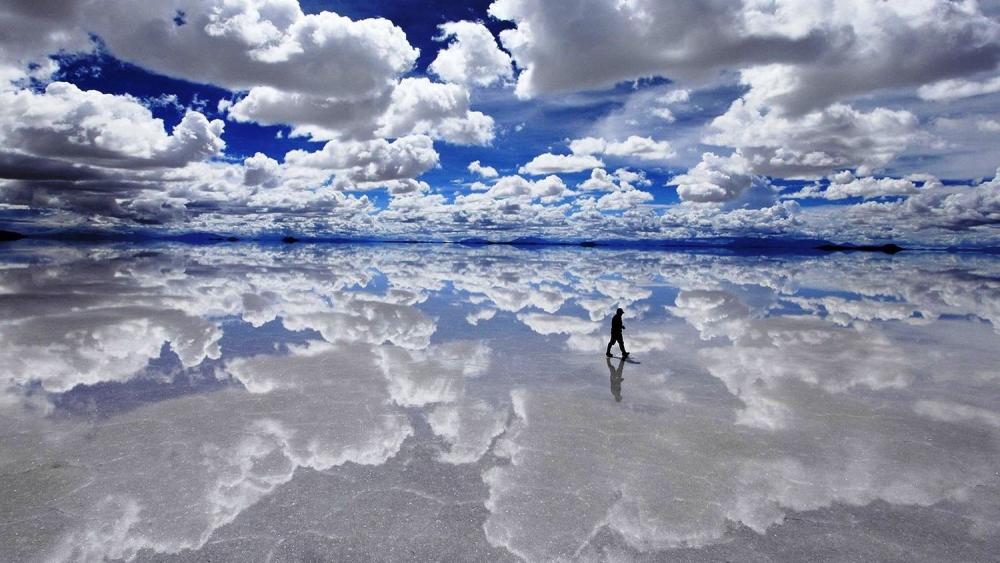
Giant Sucking Vortices
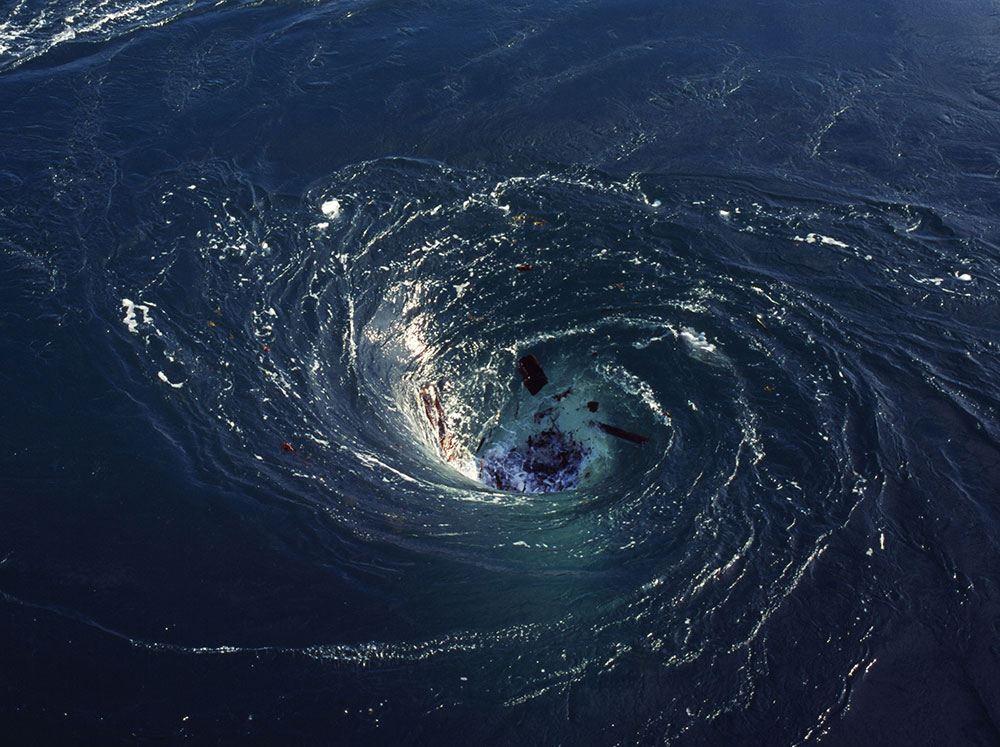
When two opposing currents clash they create a whirlpool, the downward spiraling and often powerful swirls of water that can pull you down and quite possibly drown you. The really powerful ones are called “maelstroms,” while the term employed for any whirlpool with a downdraft is “vortex.” There are three large maelstroms in the world: The Saltstraumen in Norway, which reaches speeds of 23 mph (37 km/h); the Moskstraumen, a powerful tidal current in the Lofoten Islands off the Norwegian coast with a speed of 17.3 mph (27.8 km/h); and the Corryvreckan in Scotland, the third largest whirlpool in the world, topping speeds of 11 mph (18 km/h). The waters of the Corryvreckan maelstrom create waves of more than 30 feet (9 m), and its roar can be heard ten miles (16 km) away.
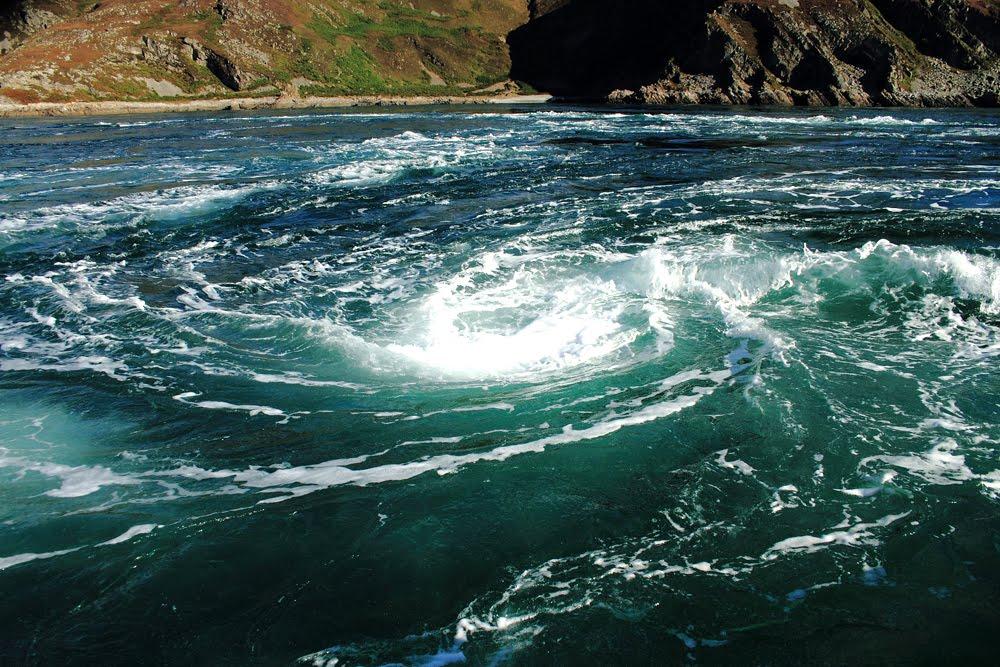
Aurora Borealis
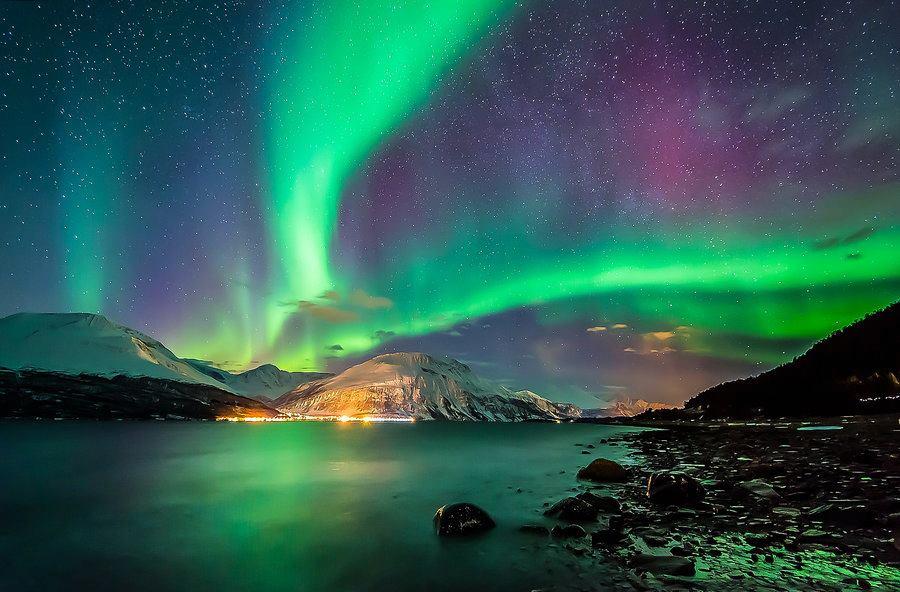
The Northern Lights are the dazzling light displays over the arctic (and Antarctic) circle. The lights take on different colors; sometimes red, green, blue or yellow and pink, caused by the collision of electrically charged particles from the sun’s rays that enter the atmosphere. The lights appear in many forms; from patches or scattered clouds of light, to streamers, arcs, rippling curtains or shooting rays that light up the sky with an eerie glow. They can be seen from Alaska, Canada, Greenland, Norway, Sweden, Finland, Denmark, Russia, Iceland and even Scotland.
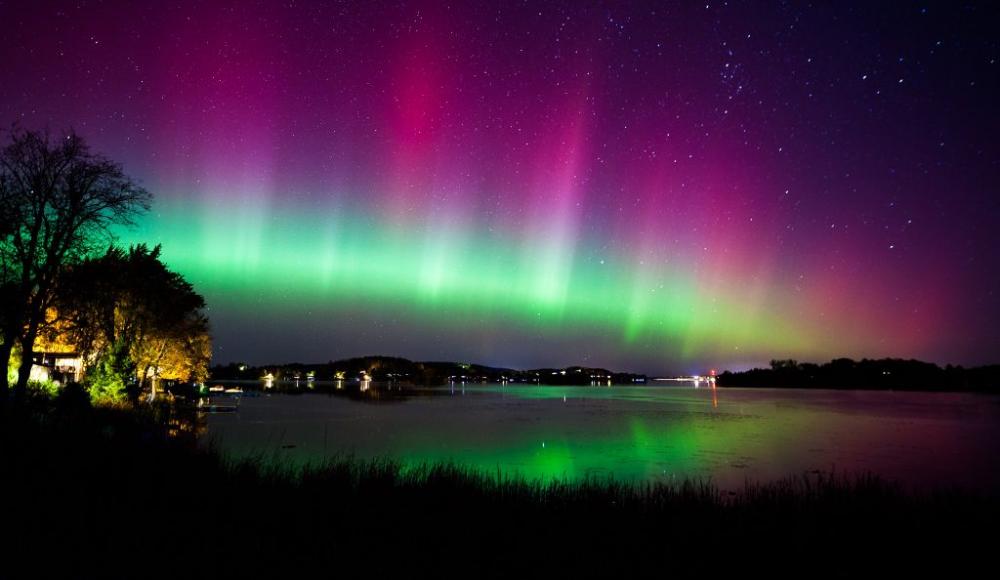
Pink Lakes
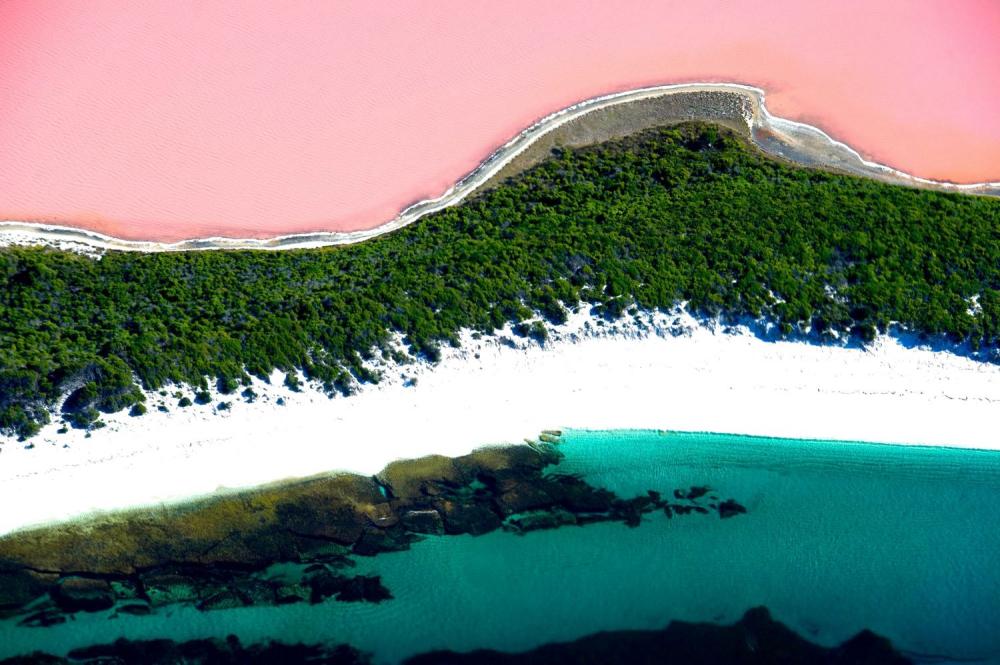
If the deep blue waters of the Caribbean or the gentle turquoise of the Indian Ocean weren’t enough for you, how about a soothing pink lake? Yes, the pink coloring of some lakes is caused by algae that produce carotenoids, the organic pigments found in some plants, bacteria and fungi. These amazing lakes can be found in Western Australia (Pink Lake, Hutt Lagoon and Lake Hillier), Senegal (Lake Retba) and Canada (Pink Lake).
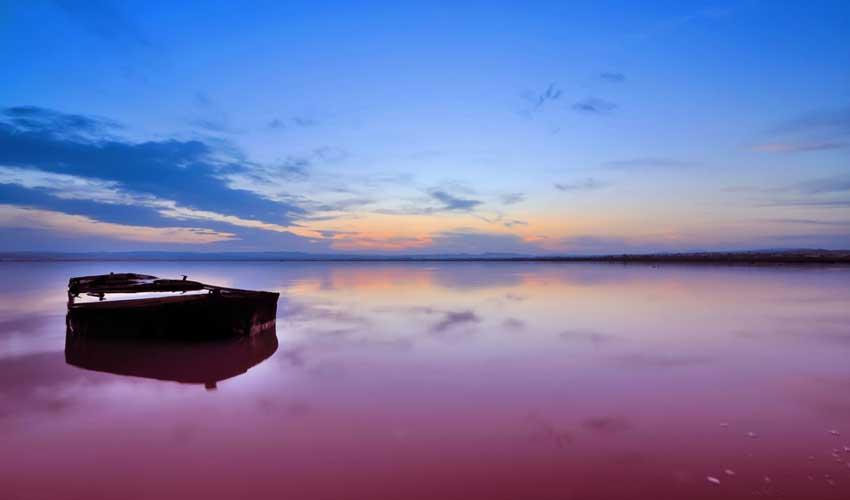
Waterspouts
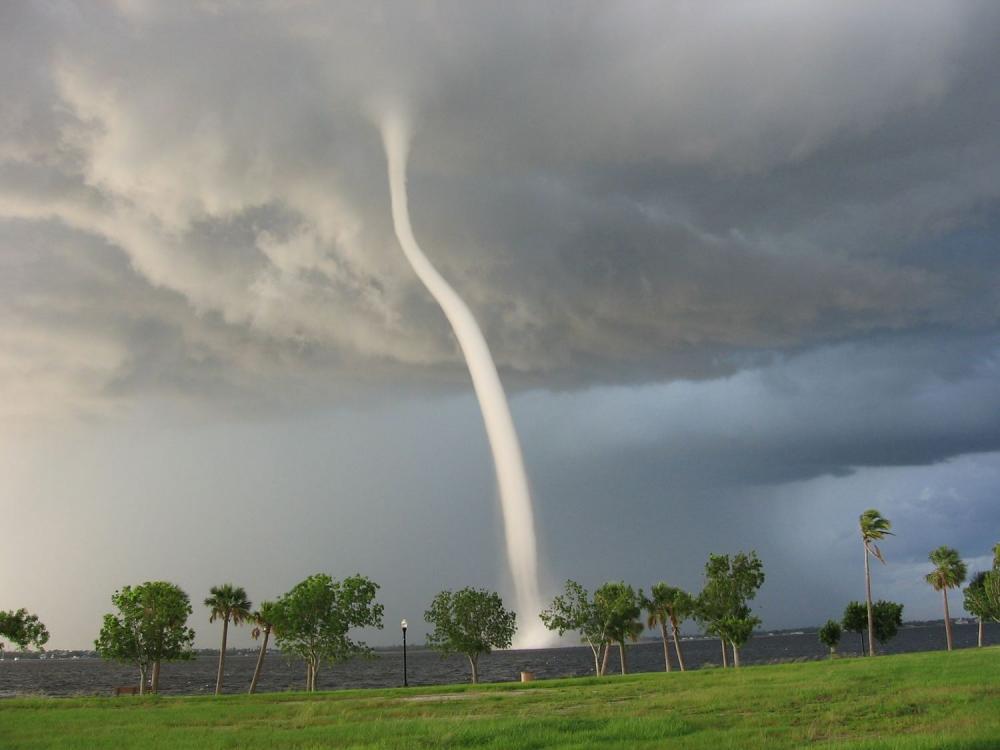
Tornadoes often display majestic power as they glide over land rustling dust and debris at dizzying speeds, but imagine the same phenomenon at sea and you get a waterspout. The warm tropical waters off of Florida’s coast are the perfect breeding ground for these powerful, spiraling columns of wind that surf the ocean surface. In fact, Florida boasts the most waterspouts ever spotted in the world, though they have been seen in other places like the Netherlands, Qatar and Australia. Often skimming the waters accompanied by lightning, thunderstorms and high winds, waterspouts are dangerous and have been known to cause sever damage and injury to boats and people alike.
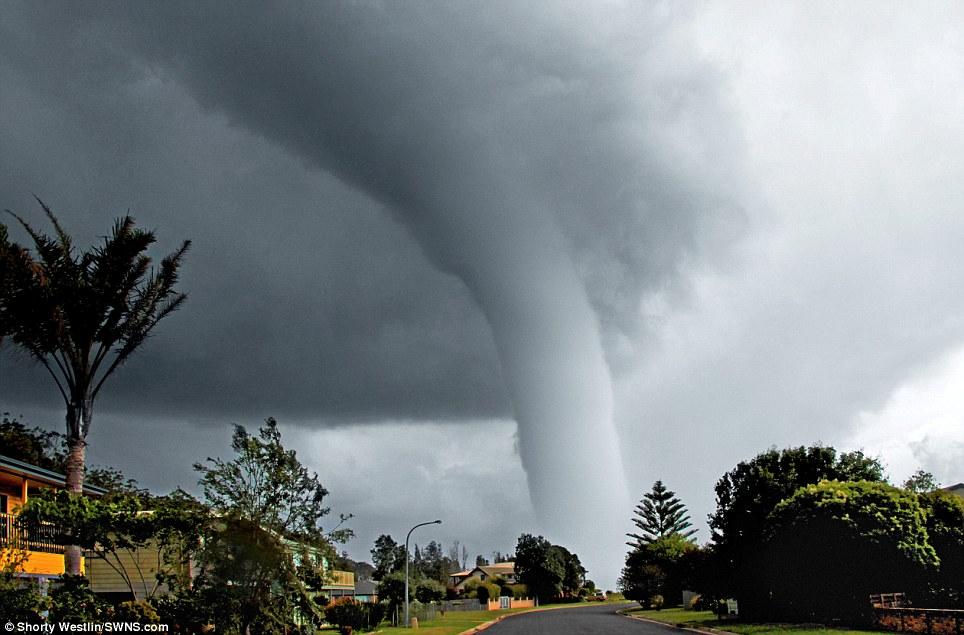
Rain of Fish
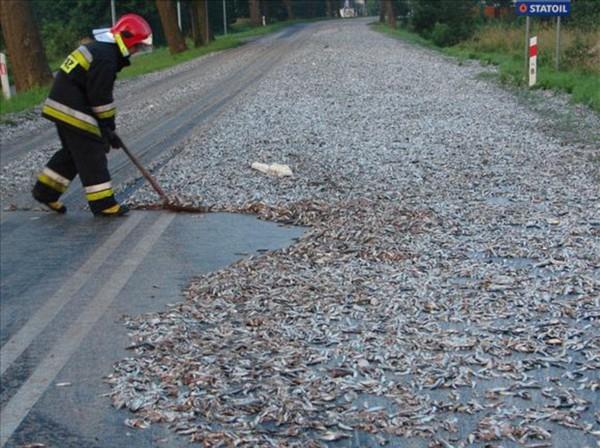
For over a century, the small town of Yoro, Honduras, has been the site of one of the most bizarre and mysterious phenomenon known to man, the rain of fish. Called the “aguacero de pescado” in Yoro, this strange event has attracted considerable international attention both from scientists and tourists. The locals hold a festival every year at the start of the rainy season in May to celebrate the phenomenon. Though scientists have come up with explanations, most notably the theory that strong winds over the ocean pick up small fish and sweeps them miles away (Yoro is 200 km from the sea, a considerable distance), the locals prefer their own explanation. In 1855, a Spanish priest arrived in the town and witnessed the poverty they suffered. He prayed for three days and three nights begging for a miracle. The Lord complied and there appeared dark clouds over the town that rained down plenty of fish for the townsfolk to eat.
Volcanic Lightning
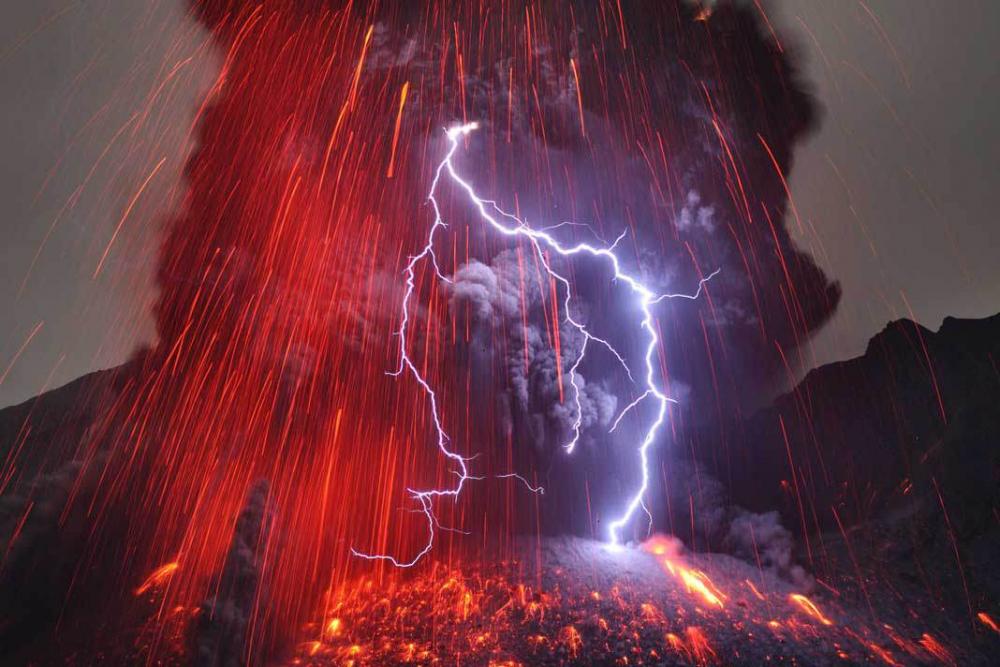
The roar of a volcano eruption coupled with the sizzling crack of lightning, is something most people find inconceivable, but the truth is that it’s more common than once thought. The phenomenon is known as a “dirty thunderstorm” and is generated when rock fragments, ash, and ice particles in a volcanic plume collide and produce static charges that give rise to electrical charges, much the same way “normal” lightning is produced in a thunderstorm. The phenomenon has been recently observed in eruptions in Chile’s Chaiten Volcano, Alaska’s Mount Augustine volcano, and in Iceland’s unpronounceable Eyjafjallajökull volcano (Thank God for copy and paste!).
Gigantic Crystals
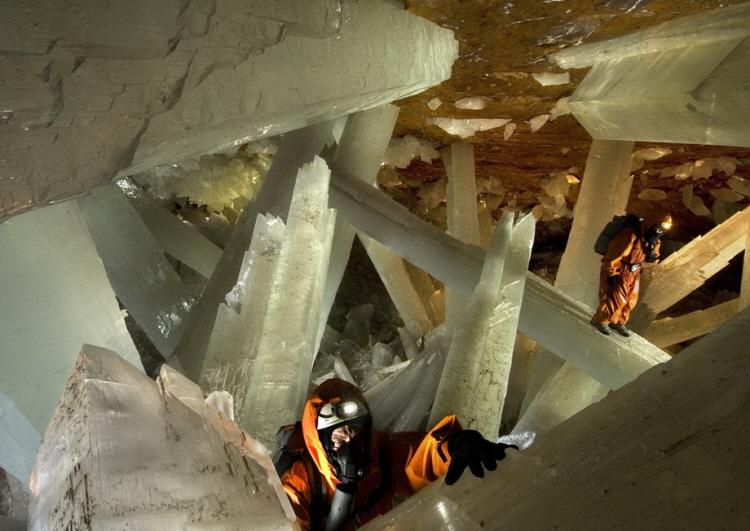
The Naica mine in Chihuahua, Mexico, is not your ordinary mine. Miners were drilling for lead, zinc and silver when they discovered a chamber 1000 feet (300 m) below the surface that contained giant selenite crystals measuring 4 feet (1.2 m) in diameter and 50 feet long (15 m). The humungous crystals, formed by hydrothermal fluids emanating from the magma chambers below, jut out of the ground in different directions forming what appears to be a kaleidoscopic crisscrossing of beams to support the cavern ceiling. Unfortunately, the cave is closed to the public.
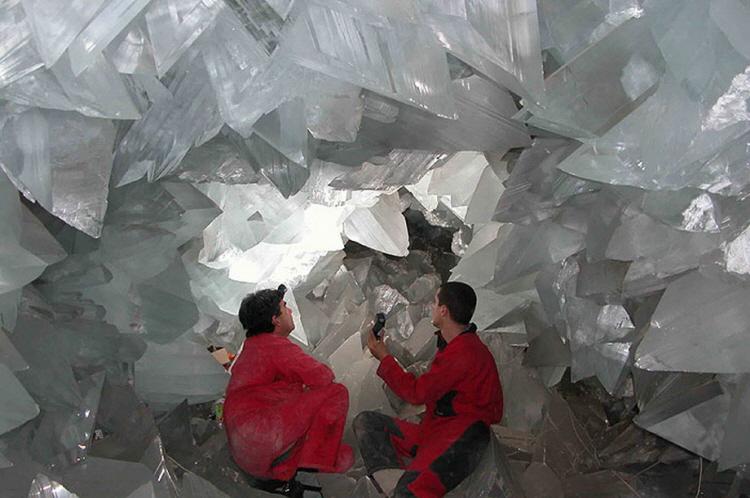
Penitentes
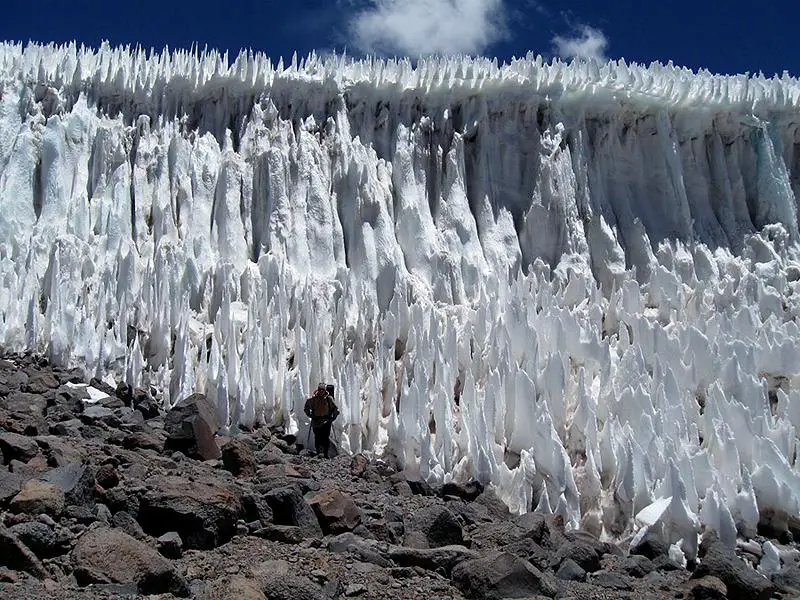
Visitors to Spain at Easter who have observed the traditional Procession of Penance slowly marching through the streets with the penitents decked in their long robes and conical hats that hide their faces, are surely impressed by the solemnity of the event and the symmetry of the penitents formation, colors and the pointy tips of their hats reaching to the sky. The same formations, shapes and colors are also present in the high Andes where the penitentes, tall thin blades of hardened snow or ice, closely spaced with the blades pointing towards the sun, sprout from the ground to form their own procession. These penitents, however, need no atoning. They vary in size, anywhere between from a few inches to over 16 feet (5 meters). Charles Darwin was the first to describe them for science while he was crossing the Andes from Santiago de Chile to Mendoza in Argentina, and scientists now believe there may be penitents on Europa, a satellite of Jupiter.
Frost Flowers
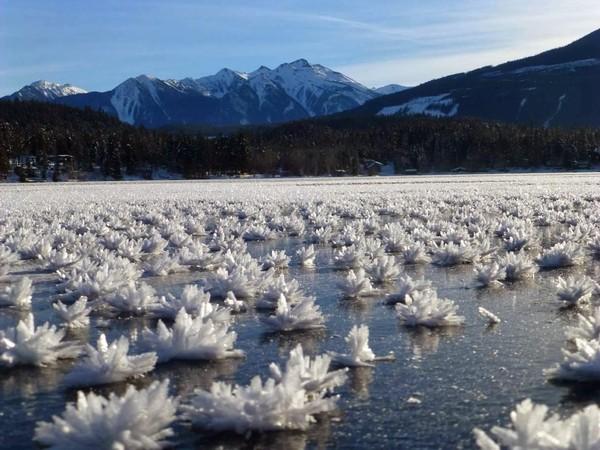
The cold also forges beautiful sculptures from the elements, like frost flowers. As temperatures drop, the sap from plants expands causing the stem to crack and leak the plant’s vital liquid. As the sap seeps out it freezes, and the continuous flow adds thinner, fragile ice to the sculpture as it extends outwards and forms ever-new sprawling shapes. These ice formations are wonderful to look at, but they’re very delicate and are easily broken when touched.
Columnar Basalt
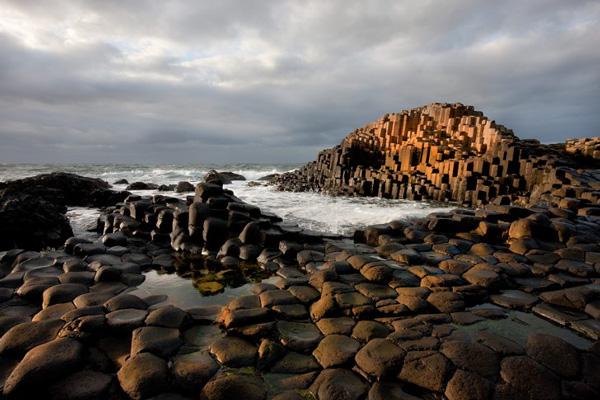
The geometric columns at Giant’s Causeway in Northern Ireland are but a small example of this natural phenomenon that produces interesting shapes in certain terrains. Columnar basalts are rock formations made from the rapidly cooling basaltic lava exposed at the surface of the earth. Their size and near perfect shapes makes them appear “unnatural,” but they are the offspring of ancient volcanic action. Giant’s Causeway alone is 60 million years old and these impressive and wondrous geometric terraces can be found all over the world.
Snow Donuts
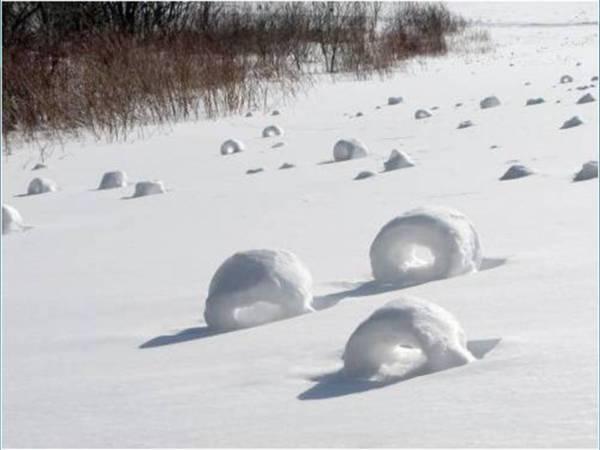
Synchronicity is rare everywhere, even in nature, but when several elements coincide exactly, the effects can be astounding. Snow donuts are the product of such exact timing. They are formed by a precise combination of snow, ice, wind, temperature and moisture all at the same time to carve out these seemingly unnatural snow sculptures. They’re most common in the praries of the U.S. but have also been spotted in the U.K. Now if only nature could build snowmen!
Sundogs
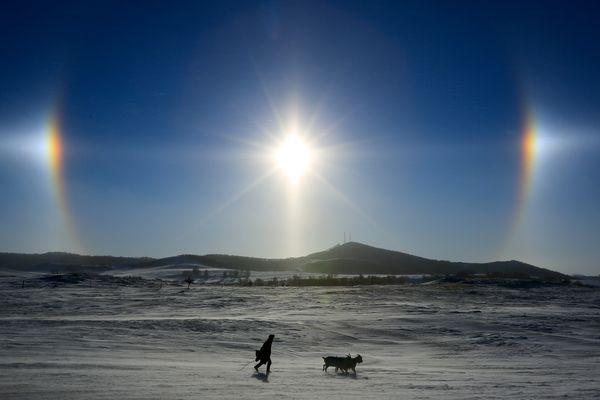
Refracting light can create some pretty amazing effects, among them sun dogs, the halo of light around the sun that we’ve all seen at some point in our lives. A sundog typically has two bright spots on either side of a low sun, often making it seem that there are three suns. The phenomenon happens when sunlight is refracted through ice crystals in high, cold cirrus clouds, the thin wispy clouds composed of water vapor. The crystals act as prisms, bending the light rays passing through them with a minimum deflection of 22°. Sundogs have fascinated men since ancient times. They have been recorded and speculated on by the Greeks, Romans, Ancient Egyptians and others.
Fire Rainbows
Though they have nothing to do with either fire or rainbows, circumhorizontal arcs, as they are properly termed, are, like sundogs, created by sunlight passing through the plate-shaped ice crystals in cirrus clouds. The arcs tend to be big so they are rarely seen in their entirety, leaving patches of reds and yellows that give the clouds the appearance of being on fire. Fire rainbows are best observed in summer and in mid-latitude areas, such as the U.S. or Western Europe, so you can catch a glimpse of them easily if you look carefully.
Supercells
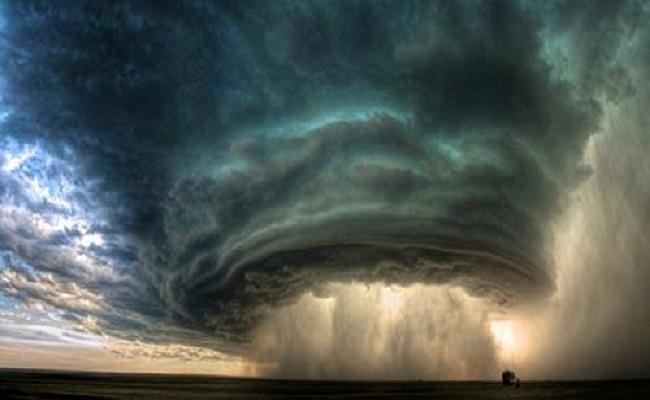
No, it’s not a superbacteria created to wipe out the human race, but a type of ominous and terrifying storm that looks like an atomic mushroom cloud but with a strong updraft that can suck your right up. There are four classifications for storms: Supercell, squall line, multi-cell, and single-cell. Supercells are the rarest but also the deadliest when they do occur and con dominate the weather up to 20 miles away. They’re most frequent in in the Great Plains of the central United States and southern Canada, northern Mexico, Argentina, Uruguay, Bangladesh, eastern India, South Africa and Australia. Supercell storms have left many victims and damage in their wake everywhere they’ve struck so it’s probably best to see this one in a Natural Geographic documentary.
Solar Eclipse
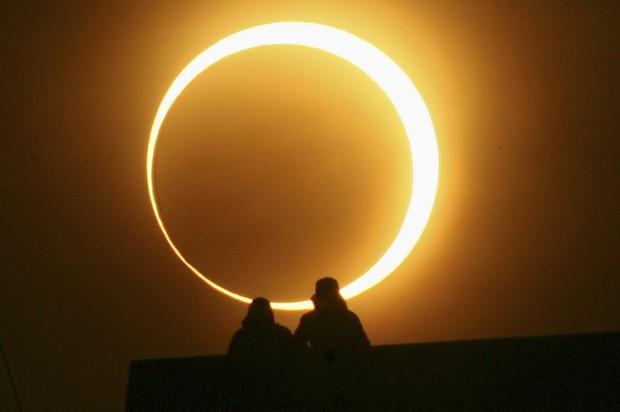
Ancient astronomers had already discovered the mathematics behind eclipses and could predict them accurately. The ancients also attributed certain powers to eclipses, both evil and good, and this phenomenon was charged with symbolism and metaphor for centuries. Today, scientists have laid bare the mechanics of solar eclipses and their mystique has been lost. They’re still a beautifully mysterious sight to catch and thousands of people traverse the globe to catch a glimpse of them wherever they may be visible.
Sandstorms
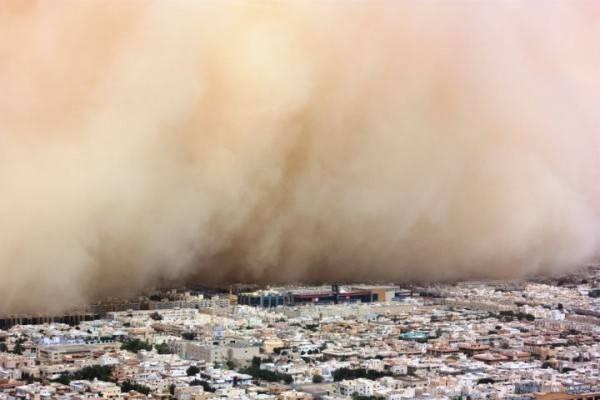
The sight of an approaching sandstorm engulfing everything around, it is the closest to a nightmarish apocalyptic scenario anyone could witness. And like most displays of nature’s power, they’re disturbingly beautiful and horribly destructive. Their immensity is visible from space, but on the microscopic level, they carry away topsoil and minerals, thereby destroying agriculture, hurting the small farmers the most. Saharan sandstorms have been known to sweep 40,000 tons of sand causing environmental destruction. Unbeknownst to many people, dust storms also spread disease by blowing away virus spores in the ground. They can lead to blindness by causing keratoconjunctivitis sicca, or dry eyes, and can also cause lung cancer from silicosis. Best to sit this one out.
Fire Whirls
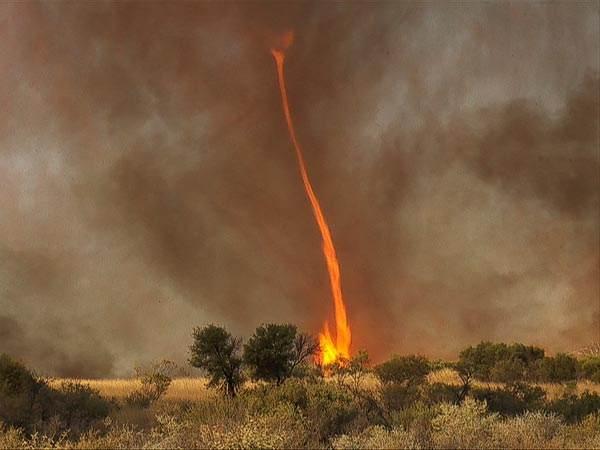
Tornadoes are bad enough, but just imagine a tornado spitting fire out in vortex of death and destruction. That’s exactly what fire whirls are. They’re caused by heat driving air above it to form a vortex. If it acquires a vertical spin, then you have a genuine fire tornado. In 1923, 38,000 people were burned to death in Tokyo during a devastating earthquake that leveled the city. You certainly wouldn’t want to light a cigarette with one of these.
Light Pillars
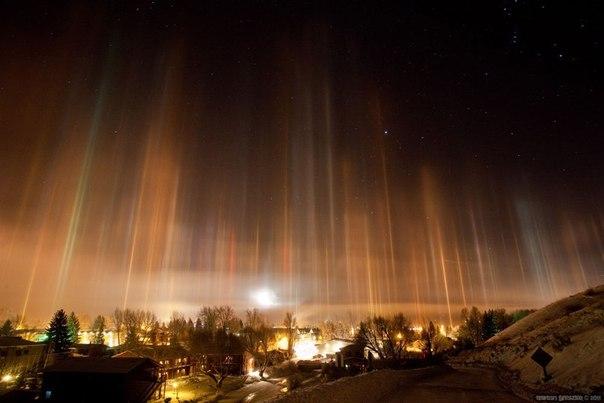
There’s no end to what ice crystals suspended in the atmosphere can do with a little help from light sources. Light pillars look like beams of light shooting vertically into the sky. They form around light sources, like the setting sun, moon or artificial lights by reflecting light back at us. The plate-shaped crystals are invisible but are roughly halfway between the viewer and the pillars. The higher the ice crystals, the taller the light pillar will appear.




